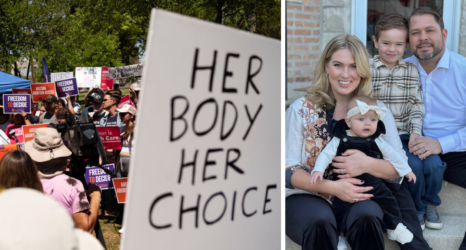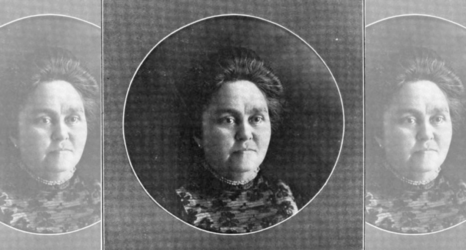This week, Supreme Court Associate Justice Anthony Kennedy announced that he will be retiring on July 31. The Justice, who was seen as a key swing vote on the narrowly divided court, determined the outcome of several cases—and now, he has opened up an opportunity for President Trump to impact America’s political climate for decades to come with another lifetime appointment to the nation’s highest bench.
The victories of the last decades could now be in imminent danger. Trump’s judicial shortlist comes directly from the Federalist Society, an organization of so-called originalists who believe that the Constitution should be interpreted as the Founding Fathers intended almost three entire centuries ago. Trump has already promised that repealing one major victory from the Court—its 1973 decision in Roe v. Wade—is a priority as he moves to fill the vacancy.
If Trump succeeds, access to safe and legal abortion could disappear overnight for women in over half of the 50 states.
Following Kennedy’s announcement, the Center for Reproductive Rights updated their 2007 report, What if Roe Fell?, to examine how the loss of Roe would immediately impact each state. Below, Ms. breaks down the findings.
States in CRR’s report were separated into three categories: high-, medium- and low-risk.
Twenty-three states are at the highest risk of losing the right to abortion without Roe—Idaho, Utah, Arizona, North Dakota, South Dakota, Kansas, Oklahoma, Texas, Wisconsin, Indiana, Kentucky, Tennessee, Missouri, Minnesota, Mississippi, Ohio, West Virginia, Alabama, Arkansas, Louisiana, Indiana, South Carolina and Georgia. All high-risk states fail to offer statutory or state constitutional protection of abortion rights.
Four states with trigger bans, or bans that become enforceable if and as soon as Roe is overturned with no legal action required by the state—North Dakota South Dakota, Louisiana and Mississippi—were immediately marked as high-risk. States were also determined to qualify as high risk if they had multiple strikes against abortion access in other policy areas, such as pre-Roe bans still on the books and in some cases still enforced, unconstitutional gestational limits or pre-viability abortion bans, the legislative makeup of the state and state policy language that points to an anti-choice wording in general policy statements.
Eight states and the District of Colombia are considered to be at medium risk of losing the right to an abortion: Wyoming, Colorado, Nebraska, Illinois, North Carolina, Pennsylvania, New Hampshire and Rhode Island.
These states have at least one branch of their government that is anti-choice or mixed-choice, and some have anti-choice policy language in place. None offer statutory or state constitutional protection of abortion rights. Colorado and Rhode Island still have pre-Roe bans still on the books, while Nebraska and North Carolina both have an unconstitutional 20-week gestational limit in effect.
Five of the eight states are also neighbored by a high-risk state on at least two, if not all, sides of their borders. Should those high-risk states lose abortion rights, the medium-risk states could see a large influx of our-of-state abortion seekers. That could overwhelm the providers still standing after an overturning of Roe, forcing women into extended waiting periods for access that make their procedures more difficult and more expensive to obtain.
Only 19 states are considered to be at low risk of losing the right to abortion in a post-Roe landscape: Washington, Oregon, California, Nevada, Montana, New Mexico, Minnesota, Virginia, New York, New Jersey, Maryland, Vermont, Massachusetts, Connecticut, Delaware, Maine, Florida, Hawaii and Alaska.
Some of these states have pre-Roe bans still on the books, a legislative makeup that is not entirely pro-choice or see some instances of anti-choice policy language, yet all but three—Virginia, New York and Vermont—have either statutory protection of abortion rights or state constitutional protection of abortion rights. California is the only state to have both statutory and state constitutional protection. Connecticut has statutory protection, and their state constitution has been found to have protections by lower court, but the highest state court has not ruled on the issue.
Every woman deserves access to comprehensive sexual and reproductive health care, no matter her income or her zip code. Abortion should not be a luxury procedure for those who can afford to travel or stay overnight in the name of access—it needs to be a procedure made accessible to those who need it the most to plan their families and the rest of their lives.
Nineteen states is not enough. A woman’s life hinging on the opinions of her state lawmakers is not acceptable.
Attempts to chip away at Roe have already decimated access to abortion for many women in the U.S., especially those in rural areas and those who are low-income or women of color. TRAP laws in states like Texas alone have shuttered over half of their states’ clinics, forcing women to go over state lines to access a constitutionally-protected and incredibly safe medical procedure.
But without Roe, the abortion landscape alone is not what’s at risk—women’s destinies are.
“We cannot stress how dire this situation is,” Eleanor Smeal, Feminist Majority president, said in an email yesterday to members. “We need all hands on deck.” FM is urging members to call their Senators and demand that they not move forward on confirming any nominees until after the midterm elections—hearkening back to Senate Majority Leader Mitch McConnell’s logic for blocking President Obama’s Supreme Court nominee, Merrick Garland, for an entire year in advance of the 2016 presidential election.
“We are planning for the fight of our lives,” Smeal noted. “We can’t go back. We must save Roe.”
Ms. is collecting women’s stories of abortion, and the lack of safe access to it, before Roe to provide ongoing testimony as we face unprecedented threats to safe, legal abortion access in the U.S. We are daring to remember—and refuse to forget—when women died because they had no choice. To share your story or the story of a grandmother, mother, sister, daughter or friend, click here.





